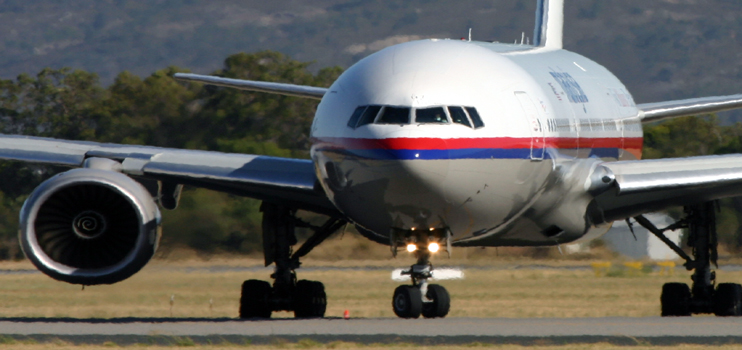Australia’s crash investigator is confident that MH370 ended its flight in the southern Indian Ocean off Western Australia, despite doubts and confusion this week.
In major developments in the ten-week search for the missing plane, the Australian Transport Safety Bureau said that it had eliminated the area around where black box pings were detected early last month as doubts were cast on the origin of those signals.
On Wednesday the US Navy’s deputy director of ocean engineering Michael Dean told CNN there was now broad agreement that the black box pings came from some other man-made source unrelated to the Boeing 777.
The plane disappeared on March 8 carrying 239 people.
The navy immediately watered down that statement as “premature and speculative”, but sources told AirlineRatings.com that it was likely that the signals received were not from the black boxes and were of “unknown origin”.
Mr Dean said if the pings had come from the recorders, searchers would have found them.
According to CNN, Mr Dean said “yes” when asked if other countries involved in the search had reached that conclusion.
“Our best theory at this point is that the pings were likely some sound produced by the ship . . . or within the electronics of the towed pinger locator,” Mr Dean said.
However that is curious as if that was the case surely the pings would have “followed the ship” – they did not.
They were all picked up in the same basic area as the ship swept back and forward through the search zone.
The comments from Mr Dean are very unfortunate as Australia is charged with responsibility for the search, and is also supposed to be the source of all information related to that effort.
The “premature” revelation came as searchers wrapped up the first phase of efforts, having scanned 850sqkm of southern Indian Ocean floor with the Bluefin-21 without finding any wreckage from the plane.
However, the total search area based on satellite data from British-based Inmarsat is 60,000sqkm.
Australia’s Deputy Prime Minister Warren Truss told Parliament the search would move into a new phase in August that could take as long as 12 months.
“We are still very confident that the resting place of the plane is in the southern Indian Ocean and along the seventh [satellite] ping line,” he said, referring to an arc identified from satellite data from Inmarsat.
Transport safety bureau chief commissioner Martin Dolan told AirlineRatings.com the agency was “confident” the plane was in the southern Indian Ocean.
The Chinese survey ship Zhu Kezhen has begun mapping the ocean floor, supported by the Haixun 01 and Malaysian vessel Bunga Mas 6, which are assisting with transporting the data to Fremantle each week for processing by Geoscience Australia.
That mapping precedes a deeper sea search by a commercial contactor.
Clearly it is going to be a long and tedious search.
























